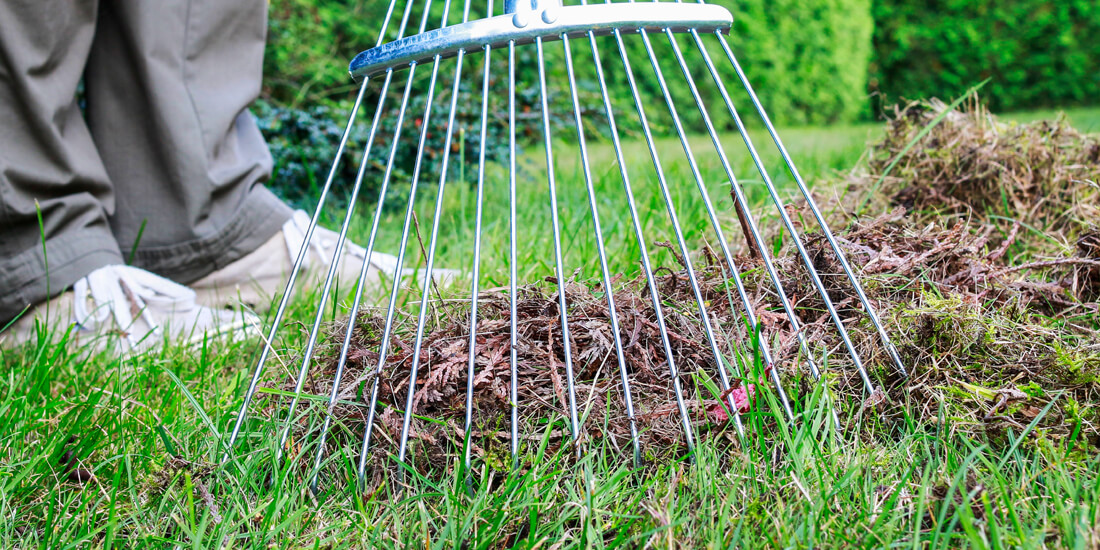How to scarify a lawn

Knowing how to scarify a lawn properly makes common lawn problems like moss and thatch a breeze to deal with! Moss will make your lawn feel spongy, and you can often see it growing as a layer at the base of your grass. Alongside this, you might also notice dead grass, known as thatch. Removing thatch is not only a good idea in autumn and spring but also essential if you need to overseed any areas. The quickest way to get rid of this is with a simple scarify, and you can use the two methods mentioned below to do this.
Different options for how to scarify your lawn:
Method 1: Using a spring tine rake
Use a leaf rake, not an ordinary rake, as this will rip lumps out of your grass rather than the moss/thatch.
This is the simplest way, although it involves quite a bit of physical effort to do the whole area. It would be best to aim to rake in one direction and then at a slightly different angle to get more material. Remember that your grass will need help to recover from this. So, sowing more seeds or feeding is a good idea.
Method 2: Using an automated scarifier
An automated scarifier will speed up this process and save you a lot of effort if you have a larger area! You can hire or buy one if you have a large area to cover. This method will remove a lot more material and be useful if you want to overseed afterwards. This may result in seeing soil patches where the moss has been removed - but that is what you need to overseed, so don’t panic!
This is best done in September as an autumn renovation or in April as a spring renovation.
Can you scarify wet grass?
Ideally no. You should aim to scarify your lawn when it isn’t soaking wet, as you could end up pulling up more than just the thatch.What are the best conditions to scarify your lawn?
We recommend scarifying your lawn during late spring or early autumn, at this time of the year, your ground will be warm enough to help your lawn recover. Avoid scarifying your lawn during winter, or deep into the summer months, when frost or drought could be possible, and your lawn is more susceptible to damage.How long should grass be before scarifying?
If you don’t plan to overseed your lawn after scarifying, then we recommend cutting your lawn down to a manageable height before scarifying. If you do it when your grass is too long then it won’t do any good, and if your grass is too short, it won’t be beneficial for your lawn.Is it best to cut grass before scarifying?
After you complete scarifying your lawn, you will most likely get a shock at how your lawn has ended up looking worse than when you began! But not to worry, this is all very normal. If you scarify correctly, you should be left with some bare and thin patches, and so you will need to overseed your lawn after you scarify. For this reason, we recommend always mowing your lawn before scarifying, as you will not be able to do it after as you will need to give the new grass a chance to grow.Will knowing how to scarify a lawn help with thatch?
Scarifying can help, but even the best-kept lawns will suffer from a build-up of thatch. However, some lawns will experience it more frequently, and this is where it becomes an issue! Compacted or heavy soil that doesn’t drain well lets water sit and allows moss to thrive. Shady and damp areas under trees can also be a consistent moss problem. You can help alleviate dampness and poor drainage through aeration - if you have clay soils, we have a guide on how to get the very best out of them.
Now you have some helpful tips on how to scarify a lawn, but if you're having issues or if your lawn has unique problems, then please drop us an email, and we will be happy to help!